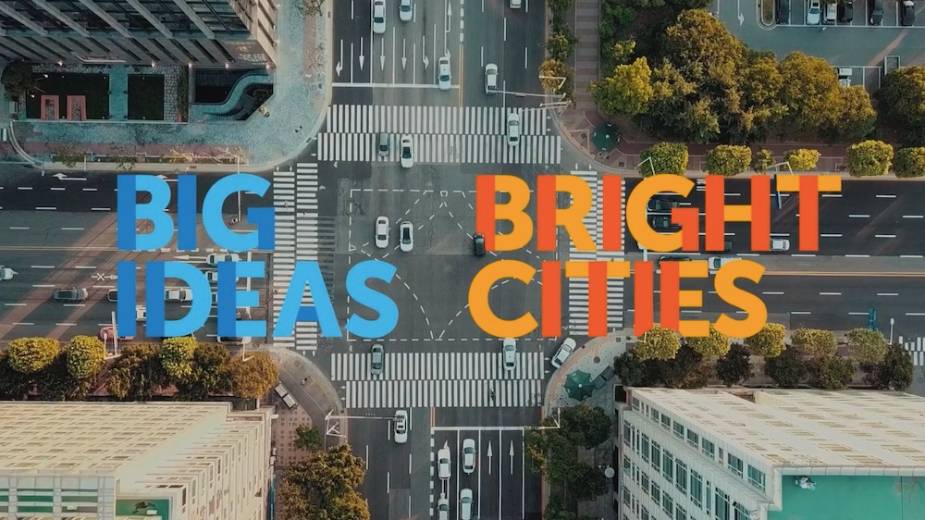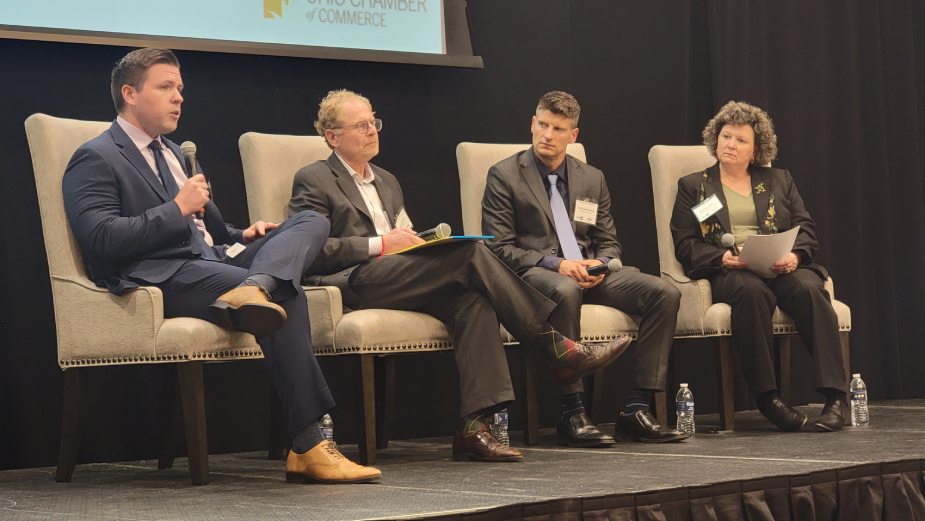Health District Initiative to Improve Quality of Life for Residents
YOUNGSTOWN, Ohio — The city of Youngstown is hoping to address social detriments of health for residents by focusing on all four sides of the city and their unique needs.
The Ohio Department of Health developed Ohio Health Improvement Zones to establish or expand place-based initiatives to improve healthy behaviors of residents through community engagement and cross sector collaboration.
OHIZ refers to the socioeconomic and demographic factors that affect the resilience of individuals and communities. By understanding where these populations are located and what factors contribute to their levels of risk, OHIZ can aid in all phases of improving health in communities, according to the Ohio Department of Health’s website.
The Youngstown City Health District was granted $450,000 to establish its own improvement zones on each side of town. YCHD was one of 26 projects/organizations selected by the ODH across Ohio to receive funding.
The YMCA was allotted $150,000 of the grant to expand its Y on the Fly Program which brings YMCA services, programs and activities to neighborhoods on buses. The funding will allow the YMCA to add two more buses to its fleet.
In 2018, Mahoning County was identified by the ODH as having an overall social vulnerability index of .76 on a scale of zero to one, with one being the most vulnerable. Some areas in Youngstown received scores as high as .99.
With the level of vulnerability widely ranging across the city, the YCHD decided to focus on each area of Youngstown rather than the city as a whole. Youngstown is split into four prominent zones: the north side, east side, south side and west side.
“Every single census tract has a high SVI, which is the social vulnerability index, meaning high poverty, high unemployment rate, high violence,” Youngstown Health Commissioner Erin Bishop says. Census tracts are small, relatively permanent statistical subdivisions of a county, averaging 4,000 inhabitants. “We have different needs on different sides of town, so that is why this can’t be just up one program for the entire city of Youngstown.”
The city has invested more than $2.4 million from the city’s American Rescue Plan funds to expand the program for the next four years to improve the way health issues are identified and addressed in the city.
A community health advocate supervisor, Andrea Flakes, and four community health advocates, all residents of the communities they serve, were hired for the YHIZ. The community health advocates are full-time employees of the city and will attend classes to be certified community health workers.
Each side of town has their own community health advocate and lead organization: Price Memorial AME Zion Church, east side; Ohev Beth Sholom, north side; Needles Eye, south side; Grace Evangelistic Temple, west side.
Each side of town will have a community action team that will include representatives of the local community, residents, the health department, and other organizations that work with the health department. Choosing representatives from the communities was important in terms of establishing trust and connections, Bishop says.
“The people that we hired are residents of the places that they serve. Not that if you don’t live there, you can’t love that place or want to do work for that place, but you know people,” she says. “You know your neighbors, and it’s easier when you know somebody, when you ask somebody to do something and help you, it’s a little bit easier if you have that little friendly knowing of them.”
The teams will establish and set up focus groups and door to door canvassing to identify the specific health needs on each side of town. A survey that focuses on the social determinants of health will be administered to residents.
The Centers for Disease Control and Prevention defines social determinants of health as the conditions in places where people are born, live, learn, work, play, worship, and age that affect a wide range of health risks and outcomes. It identifies five key social determinants of health: economic stability, education access and quality, health care access and quality, neighborhood and built environment, and social and community context.
Social and community context objectives include community cohesion, civic participation, discrimination, conditions in the workplace and incarceration.
Neighborhood and built environment objectives include neighborhood crime and violence, quality of housing, access to transportation, availability of healthy foods, and air and water quality.
Community health and safety, access to care, transportation and housing are the main issues residents across the four areas are reporting, Flakes says. Addressing public health through a holistic approach may help other issues plaguing the city, such as gun violence, Flakes says.
“They all go hand in hand; if you’re unhealthy, then you’re unhappy. We have a lot of unhappy people in our city because they don’t know about the resources that are available to them,” she says. “If we can bring those resources to them, and if they’re willing to come to us, then we can address those things, and we can help in those areas to make them feel happy and safe to make them feel a part of something.”
Addressing gun violence also might include advocating for change at the legislative level. The state’s constitutional carry law that went into effect in June made gun access easier, Flakes says. Advocating for change might be a slow process, she says, but steps can be made in the meantime to curb violence.
“It seems like everybody went and bought a gun, so in order for us to address those issues we have to learn how to deescalate fights and disagreements,” she says. “If we can learn how to deescalate them, then maybe that would be a way to make people not feel like they have to pull out that gun and instead talk about it.”
Addressing the needs of the city goes together with the overall goal of keeping the younger generation in Youngstown, Flakes says, which starts with the schools.
“We can start with our children from kindergarten on up; we can really make an impact on the individuals that they become as they grow older,” she says. “We want to show them that we can do this, that there is opportunity for them that they don’t have to leave the city because a lot of our youth, they graduate high school, and they leave. We want them to stay here and bring vitality here to our city. We need that here in Youngstown.”
Spiritual, emotional, environmental, physical and mental health all fall under the general “health” umbrella the initiative will address, Health Commissioner Bishop says.
“This is totally a community collaboration and community engagement initiative,” she says. “It’s a way of pulling them all together and hopefully making a difference under these umbrellas.”
The initiative’s partners include: Mercy Health, the Healthy Community Partnership out of the Community Foundation, the Mahoning Youngstown Community Action Council, Catholic Charities Regional Agency, Mahoning County Public Health, the Mahoning County Mental Health and Recovery Board, Mahoning County Family and Children First Council, the Mahoning County Homeless Continuum of Care, the City of Youngstown’s Economic Development and Planning and Mayor’s Office, the Youngstown Local Office of Minority Health, Youngstown State University, Project MKC and the Youngstown Metropolitan Housing Authority.
The $150,000 the YMCA received will help the organization reach people outside of its walls, grant manager Emily George says. The YMCA has always valued a holistic approach towards health, and George hopes this initiative spreads that message.
“We really want to reach the community outside our walls with our services and programs. Our programs really address the mind, body and spirit. So they all work together, “she says. “We really emphasize that in our programs. So not only is there a physical element, but there’s also a sense of belonging element and there’s a spiritual element.”
Flakes will be overseeing the four community health advocates: Kiara Jones, north side; Erwin Adams, south side; Debra McElroy, east side and Kathy Johnson, west side.
Jones is representing the younger generation of Youngstown and hopes to revitalize the city for future generations. Jones proudly grew up on the north side and looks forward to serving her community in a new way.
“We [community health workers] can give you the positivity, the love, the hope that a community needs,” she says.
Jones decided to stay in her city to work and she hopes that others will choose to do the same, especially after what she hopes is a successful initiative.
“The younger generation feels like it’s a dying city, that there’s no life here, and I completely disagree. I feel like we don’t have the knowledge or the resources to revive the city because everybody leaves so quickly,” she says. “We’re so infused with talent and opportunity, especially the younger generation, and they need to know that this is a place they can thrive.”
Once the issues have been identified, the members of the community, under the leadership of the YHIZ, will work together to develop goals and action steps to create a healthier community. In the new year, the team will focus on training and will begin canvassing once warmer weather arrives.
Pictured above from left: Kiara Jones, community health advocate for the north side; Erwin Adams, community health advocate for the south side; Debra McElroy, community health advocate for the east side; Kathy Johnson, community health advocate for the west side and Andrea Flakes, community health advocate supervisor.
Copyright 2024 The Business Journal, Youngstown, Ohio.



